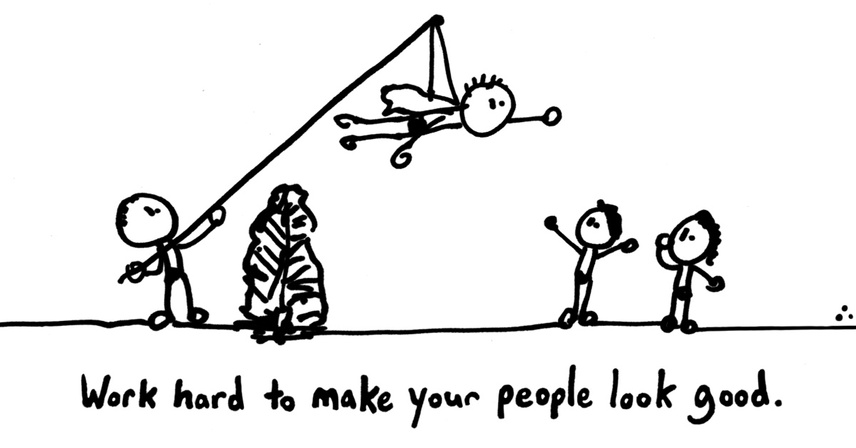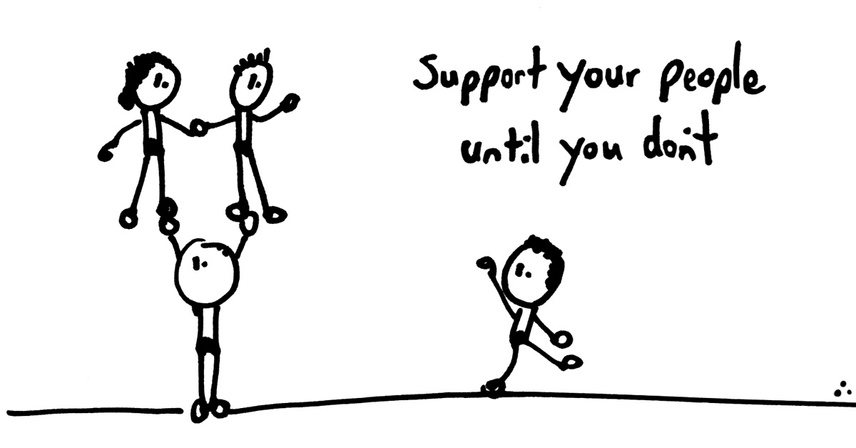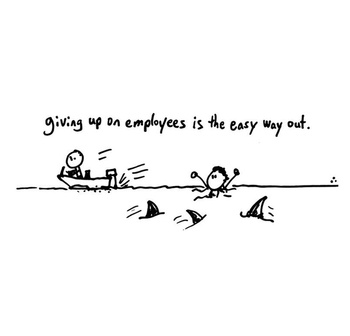Giving Up On Employees Is the Easy Way Outs
- Thought Leadership
- By Seth Besmertnik
- 6 minutes read
Over the years, I’ve seen a lot of bad management.
I’ve seen people leave a company and their manager says things like,“It wasn’t a big deal they left.” “We wanted them to leave.” “We managed them out.” “They weren’t a great performer.” I’ve seen managers give employees bad reviews without a clear plan for their recovery. I’ve seen managers give low bonuses to “send a message.” Then, their passive-aggressive behavior creates a self-fulfilling prophecy of failure—and fosters an environment where employees feel unsafe—resulting in low levels of productivity and a constant fear of “being next.”
Why does it matter? Job security, employee trust, and an expectation for candid, constructive feedback are all at the top of what employees say they need to succeed. In fact, respectful treatment beats out compensation as a motivating factor.
A safe, candid environment doesn’t come from employees—it comes from leaders. While there is a time to let employees go, you’ll save time, resources, and great people if you tackle communication problems first.
Don’t Manage Them Out. Help Them Grow into the Employee You Need.
Let’s say you have someone who’s underperforming. You could withhold bonuses, informally demote them or just manage them out. That does not fix the problem—either you’re stuck with someone who hates their job, or you’ve got an empty seat to fill. A better solution is to help that person grow to fit the role—you may be surprised how much some people are capable of changing.
Two foundational components to effective management of employee growth are 1) psychological safety and 2) candid feedback. You can think of them as soil and sunlight.
If you want someone to meet expectations, their baseline has to be feeling safe at work. That means freedom from passive-aggression and pointless punishment, but above all it means reciprocity. This person is working to help you look good and succeed—they have to know that you’re doing the same for them.

Safety through reciprocity also means giving honest feedback. I believe in radical candor (great read on the topic ); the basic idea is that you give someone incredibly critical and direct feedback so they can improve, but you do it from a place of love, care, and compassion. It may be hard for them to receive at first, however, they will see it’s coming from the right place, and in the long run, they will thank you.
You can’t have conversations with radical candor if you are not willing to do the difficult work of making someone uncomfortable for their own benefit. Your impulse might be to avoid having hard conversations — don’t. Push through and be radically candid; it will be worth it. When your employees know that failure results in learning and growth—instead of punishment—they will feel safe to act, and the whole company benefits.

Safe Employees are Better Employees
When you hire someone, they are now ‘under your protection’. It’s your job to look out for them, keep them safe and make them the best person they can be.
Simon Sinek often talks about how great customer service can be traced back to the leaders — the ones making employees feel safe and protected. The Tempkin Group reports that companies that excel in customer experience have 1.5x times as many engaged employees compared to companies with a poor customer experience.
On the other hand, when employees do not feel safe - we see the exact lousy performance we are trying to avoid. They are more worried about doing something wrong (and getting in trouble) than doing what is right. Job insecurity strongly correlates to poor performance and more absenteeism.

A Guide to the Growth Approach
This style of management isn’t easy to practice. So here’s a checklist to take you through the process of helping your employees grow—or, if they’re ultimately unwilling, helping them exit the right way.
- Be Direct. If you are annoyed or disappointed by something, take it head on. Calm yourself down, organize your thoughts, think of how you also have contributed to the issue, and address it proactively. Take the person for lunch or coffee. Let them know that there’s a problem, but that your concern comes from a good place. Be clear that you will work to fix it—together.
- Make your expectations clear. Part of feeling safe is knowing where you stand. Whether you’re satisfied with or disappointed by performance, let them know specifically why, while making sure they know they are safe. If you don’t communicate your expectations, you can’t expect anyone to live up to them.
- Have an open dialogue. If your team never challenges your ideas or thinking, chances are they do not feel safe enough to do so. You’re setting the tone and standard for the team, but make sure your people know that their ideas are valued and, in fact, necessary for the success of your organization. Come to tough conversations with a gameplan on fixing the problem, but be sure to make your team members part of the discussion.
- Provide a parachute. If they’re unable to accept the challenge of changing, provide them a safe way to exit with dignity, support, and a generous severance. If you’ve fostered a trusting environment, then you can have this conversation openly rather than having the person “secretly” looking for a new job or letting it get to the point where you have to let them go more abruptly.
- Avoid the sideshow. Don't drive a wedge between your staff. Don't be part of the gossip. When people have issues with each other, get them in the room and talk it out. Do not allow yourself to be a part of negative conversations about other employees on or off the team.

Being on your team is a black and white matter. As a leader, every employee is on your team. You must support and work with them. Do everything you can. And if the point comes that you don’t believe they are the right fit anymore, then tell them that...work on a transition and let them go the right way.
Passive-aggressiveness is your problem, not anyone else's—and it’s nonsense. Be in one of two modes:
- You are on my team and I’m ready to go to war for you.
- You are not a fit and I’ll help you find a new home.
There is no in-between.

P.S.: one of my favorite leadership videos goes deep on the chemistry of leadership and its impact on people: leaders eat last by Simon Sinek.
Interest in more people-first culture content? Check out all of Conductor's thought leadership around building a people-first culture.
This content originally appeared in Entrepreneur .







